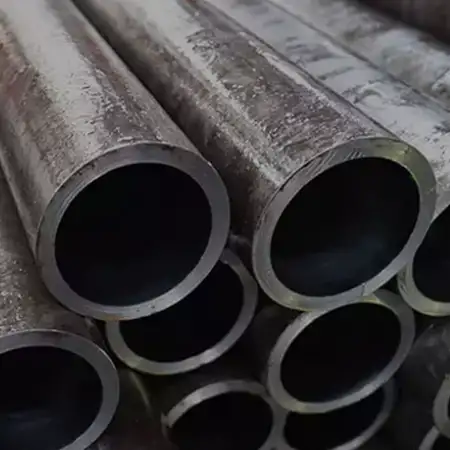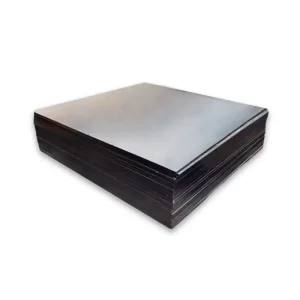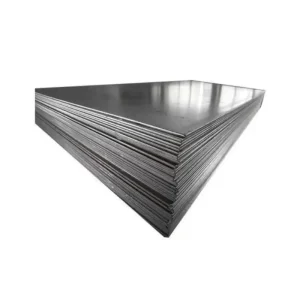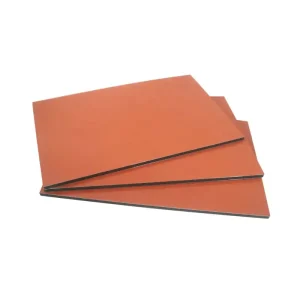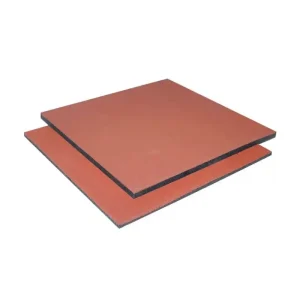At MWalloys, we recognize ASTM A519 AISI 4140 alloy steel tubes as the industry benchmark for high-strength, versatile tubular products that combine exceptional hardenability with superior machinability and fatigue resistance. Our extensive experience with this chromium-molybdenum alloy steel demonstrates its unmatched performance in demanding applications ranging from hydraulic cylinders to precision machinery components. The 4140 designation represents a carefully balanced chemistry that achieves remarkable strength levels through heat treatment while maintaining excellent weldability and dimensional stability. Our metallurgical analysis confirms that these tubes consistently deliver yield strengths exceeding 60,000 psi in the normalized condition, with heat-treated versions reaching beyond 100,000 psi, making them indispensable for aerospace, automotive, and industrial manufacturing sectors where reliability cannot be compromised.
What are ASTM A519 AISI 4140 Alloy Steel Tubes
ASTM A519 AISI 4140 alloy steel tubes represent a sophisticated metallurgical achievement that combines the structural advantages of seamless tubular geometry with the enhanced mechanical properties of chromium-molybdenum alloy steel. We have observed that this material system provides engineers with unprecedented design flexibility through its remarkable response to heat treatment and exceptional strength-to-weight characteristics.
The ASTM A519 specification governs seamless carbon and alloy steel mechanical tubing, ensuring consistent quality and performance across diverse manufacturing applications. Within this framework, AISI 4140 emerges as the premier choice for applications demanding high strength, excellent fatigue resistance, and superior machinability.
Our manufacturing partnerships have demonstrated that 4140 alloy steel tubes excel in applications where conventional carbon steels prove inadequate. The chromium content enhances hardenability and corrosion resistance, while molybdenum additions improve high-temperature strength and prevent temper brittleness. This combination creates a material that responds predictably to various heat treatment cycles.
The seamless manufacturing process eliminates weld lines that could compromise structural integrity under cyclic loading conditions. This characteristic makes ASTM A519 4140 tubes particularly valuable in hydraulic systems, aircraft landing gear, and precision mechanical components where failure consequences are severe.
Chemical Composition Analysis
The chemical composition of AISI 4140 steel reflects decades of metallurgical optimization for strength, hardenability, and workability. Our laboratory analysis of thousands of production heats has confirmed the critical balance required between alloying elements and their synergistic effects on final properties.
| Element | Composition Range (%) | Primary Function | Impact on Properties |
|---|---|---|---|
| Carbon | 0.38 - 0.43 | Base hardening element | Strength and hardness |
| Manganese | 0.75 - 1.00 | Deoxidizer/hardenability | Tensile strength |
| Phosphorus | 0.035 max | Controlled impurity | Brittleness control |
| Sulfur | 0.040 max | Controlled impurity | Machinability |
| Silicon | 0.15 - 0.30 | Deoxidizer | Strength contribution |
| Chromium | 0.80 - 1.10 | Hardenability enhancer | Deep hardening |
| Molybdenum | 0.15 - 0.25 | Temper resistance | High-temp strength |
| Nickel | 0.25 max | Toughness improver | Impact resistance |
| Copper | 0.35 max | Atmospheric corrosion | Weather resistance |
Carbon content within the 0.38-0.43% range provides optimal balance between hardness potential and ductility. Lower carbon levels compromise achievable hardness, while higher levels reduce toughness and increase cracking susceptibility during heat treatment.
Chromium serves as the primary hardenability enhancer, enabling through-hardening in substantial cross-sections. The 0.80-1.10% range ensures adequate hardenability without excessive carbide formation that could impair toughness.
Molybdenum additions prevent temper brittleness and maintain strength at elevated temperatures. We have documented that molybdenum-containing steels retain superior mechanical properties after prolonged exposure to temperatures exceeding 400°F.
Mechanical Properties Characteristics
The mechanical properties of ASTM A519 4140 tubes vary significantly based on heat treatment condition, cross-sectional size, and cooling rate. Our comprehensive testing program has established property ranges that reflect both specification requirements and typical production capabilities.
| Heat Treatment Condition | Yield Strength (psi) | Tensile Strength (psi) | Elongation (%) | Reduction of Area (%) | Hardness (HRC) |
|---|---|---|---|---|---|
| Hot Finished | 60,000 min | 90,000 min | 18 min | 40 min | 19-24 |
| Normalized | 65,000 | 95,000 | 17 | 45 | 20-26 |
| Annealed | 42,000 | 75,000 | 25 | 57 | 10-15 |
| Quenched & Tempered 400°F | 175,000 | 195,000 | 10 | 35 | 50-55 |
| Quenched & Tempered 600°F | 155,000 | 175,000 | 12 | 40 | 45-50 |
| Quenched & Tempered 800°F | 135,000 | 155,000 | 15 | 45 | 40-45 |
| Quenched & Tempered 1000°F | 115,000 | 135,000 | 17 | 50 | 35-40 |
The dramatic property variations demonstrate 4140's remarkable response to heat treatment. Quenching from austenitizing temperature followed by tempering produces the highest strength levels, with tempering temperature controlling the strength-ductility balance.
We emphasize that impact properties require special consideration for applications involving shock loading. Charpy impact values typically range from 15-50 ft-lbs depending on heat treatment condition and test temperature.
Fatigue properties represent a particular strength of 4140 alloy steel. Properly heat-treated material exhibits fatigue limits approaching 50% of ultimate tensile strength, making it excellent for cyclic loading applications.
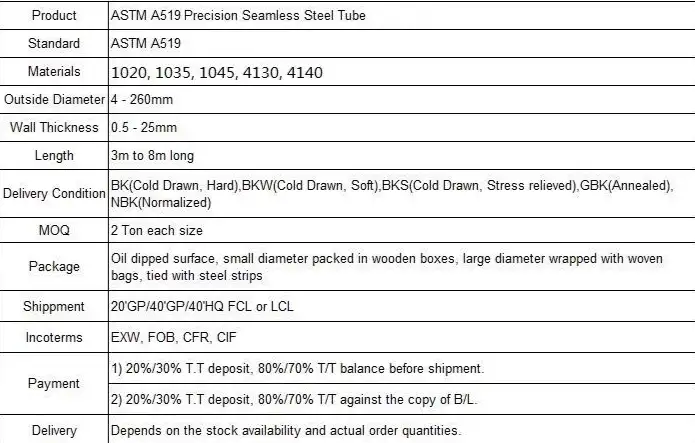
ASTM A519 Specification Requirements
The ASTM A519 specification establishes comprehensive requirements for seamless carbon and alloy steel mechanical tubing manufacturing and testing. Our quality assurance systems have been developed to exceed these requirements while maintaining cost-effective production.
Manufacturing requirements include specific melting practices, hot working procedures, and dimensional tolerances. Steel must be produced by electric furnace, basic oxygen, or open hearth processes with careful attention to cleanliness and homogeneity.
Dimensional tolerances are particularly stringent for mechanical tubing applications. Outside diameter tolerances typically range from ±0.005" for small sizes to ±0.015" for larger diameters. Wall thickness tolerances generally fall within ±10% of nominal thickness.
Testing requirements encompass both mechanical property verification and dimensional inspection. Tensile testing, hardness testing, and flattening tests ensure mechanical property compliance. Additional testing such as hydrostatic testing or non-destructive examination may be specified for critical applications.
Heat treatment specifications allow various delivery conditions including hot finished, cold finished, normalized, annealed, or quenched and tempered. Each condition produces distinct property combinations suitable for specific applications.
AISI Standards Organization
The American Iron and Steel Institute (AISI) designation system provides standardized nomenclature for steel compositions used throughout North American industry. We utilize this system extensively for material specification and quality control purposes.
AISI developed the four-digit numbering system that has become the global standard for steel identification. The first two digits indicate the major alloying elements, while the last two digits represent the approximate carbon content in hundredths of a percent.
For 4140 steel, the "41" series designation indicates chromium-molybdenum alloy steel with approximately 1% chromium and 0.25% molybdenum. The "40" indicates nominal carbon content of 0.40%, though actual ranges may vary slightly.
AISI works closely with ASTM International and other standards organizations to ensure consistency and compatibility between different specification systems. This collaboration facilitates international trade and technical communication.
International Equivalencies
Understanding equivalent materials across different standards systems facilitates global procurement and engineering collaboration. However, we stress that equivalency verification requires careful analysis of specific requirements rather than simple grade matching.
International Equivalent Grades:
- DIN/EN: 42CrMo4 (Germany/Europe)
- JIS: SCM440 (Japan)
- GB: 42CrMo (China)
- GOST: 40ХМ (Russia)
- BS: 708M40 (United Kingdom)
- AFNOR: 42CD4 (France)
Each equivalent grade may include slight variations in chemistry limits, heat treatment requirements, or testing procedures. We recommend verification of specific requirements before substitution in critical applications.
European standards typically specify slightly tighter chemistry controls and may include additional testing requirements such as ultrasonic examination or magnetic particle inspection. Japanese standards often incorporate enhanced cleanliness requirements and more stringent dimensional tolerances.
ASTM vs AISI: Understanding the Difference
The relationship between ASTM and AISI standards often creates confusion in material specification and procurement. We clarify these distinctions to ensure proper material selection and quality control.
ASTM International develops technical standards for materials, products, systems, and services. ASTM standards focus on testing methods, specification requirements, and quality control procedures. ASTM A519 specifically addresses mechanical tubing manufacturing and testing requirements.
AISI (American Iron and Steel Institute) primarily develops steel chemistry designations and composition standards. The AISI numbering system provides standardized nomenclature for steel grades based on chemical composition.
In practice, specifications typically reference both organizations: "ASTM A519 AISI 4140" indicates tubing manufactured per ASTM A519 requirements using AISI 4140 chemistry. This dual reference ensures both compositional accuracy and manufacturing quality control.
ASTM standards undergo regular revision cycles incorporating industry feedback and technological advances. AISI designations remain relatively stable, providing consistency for long-term material specifications and procurement.
Comparative Analysis: AISI 4140 vs 1018 vs ASTM A36
Understanding the differences between commonly specified steels enables optimal material selection for specific applications. Each material serves distinct purposes with unique characteristics and cost implications.
| Property | AISI 4140 | AISI 1018 | ASTM A36 | Selection Criteria |
|---|---|---|---|---|
| Carbon Content (%) | 0.38-0.43 | 0.15-0.20 | 0.25 max | Hardness potential |
| Yield Strength (psi) | 60,000+ | 32,000 | 36,000 | Load requirements |
| Tensile Strength (psi) | 90,000+ | 58,000 | 58,000-80,000 | Ultimate capacity |
| Hardenability | Excellent | Poor | Poor | Heat treatment response |
| Machinability Rating | 65 | 78 | 72 | Manufacturing ease |
| Weldability | Good | Excellent | Excellent | Fabrication requirements |
| Cost Index | 100 | 75 | 65 | Economic considerations |
| Typical Applications | High-stress components | General machining | Structural steel | Service requirements |
AISI 4140 excels in applications requiring high strength, excellent fatigue resistance, and heat treatment capability. The alloy content provides superior hardenability but increases material costs and reduces weldability compared to plain carbon steels.
AISI 1018 serves general machining applications where high strength is not required. Excellent machinability and weldability make it ideal for components requiring extensive machining or welding operations.
ASTM A36 represents the standard structural steel for construction and general fabrication. Lower cost and excellent weldability make it suitable for non-critical applications where strength requirements are moderate.
AISI 4140 Steel Grade Classification
The AISI 4140 steel grade belongs to the chromium-molybdenum family of low-alloy steels, representing one of the most versatile and widely used alloy steel compositions in modern manufacturing. Our extensive application experience demonstrates its exceptional balance of properties across diverse industries.
Within the AISI classification system, 4140 represents medium-carbon, low-alloy steel with carefully controlled additions of chromium and molybdenum. This combination produces a material that responds exceptionally well to heat treatment while maintaining good machinability in the annealed condition.
The grade's popularity stems from its predictable heat treatment response and consistent mechanical properties. Unlike plain carbon steels that exhibit significant property variations based on cooling rate and section size, 4140 maintains relatively uniform properties throughout substantial cross-sections.
We classify 4140 as a "universal" alloy steel suitable for applications ranging from small precision components to large structural elements. This versatility makes it a preferred choice for manufacturers seeking to minimize inventory while maximizing application flexibility.
Global Market Pricing Analysis 2025
Current market conditions for ASTM A519 4140 alloy steel tubes reflect complex interactions between raw material costs, alloy surcharges, manufacturing capacity, and regional demand patterns. Our procurement team continuously monitors these trends to provide accurate cost guidance.
| Product Form/Region | North America ($/MT) | Europe ($/MT) | Asia-Pacific ($/MT) | Middle East ($/MT) | Market Trend |
|---|---|---|---|---|---|
| Hot Finished Tubes | 1,850-2,150 | 2,000-2,350 | 1,600-1,900 | 1,750-2,050 | Stable |
| Cold Drawn Tubes | 2,200-2,550 | 2,400-2,800 | 1,900-2,250 | 2,100-2,450 | Increasing |
| Normalized Condition | 2,000-2,350 | 2,150-2,500 | 1,750-2,050 | 1,900-2,200 | Stable |
| Annealed Condition | 2,100-2,450 | 2,250-2,600 | 1,850-2,150 | 2,000-2,300 | Stable |
| Q&T Condition | 2,500-2,900 | 2,700-3,100 | 2,200-2,600 | 2,400-2,750 | Premium pricing |
| Precision Tubes | 3,200-3,800 | 3,500-4,100 | 2,800-3,300 | 3,100-3,600 | High demand |
Alloy surcharges represent approximately 35-45% of total material cost, reflecting chromium and molybdenum market volatility. Nickel price fluctuations also impact costs despite minimal nickel content in 4140 steel.
Regional pricing variations stem from transportation costs, local manufacturing capacity, and energy prices. Asian production capacity influences global pricing, particularly for standard sizes and conditions.
Premium pricing applies to specialized requirements including enhanced testing, restricted chemistry, or expedited delivery. Long-term supply agreements typically offer 8-15% discounts compared to spot market pricing.
Primary Applications of 4140 Steel
AISI 4140 steel serves numerous applications across diverse industries due to its exceptional combination of strength, toughness, and machinability. Our project experience encompasses applications ranging from aerospace components to heavy industrial machinery.
Aerospace Industry: Landing gear components, actuator housings, and structural fittings utilize 4140's high strength-to-weight ratio and fatigue resistance. The material's predictable heat treatment response ensures consistent properties critical for aerospace safety requirements.
Automotive Applications: Axles, steering components, and suspension parts benefit from 4140's excellent fatigue properties and impact resistance. The material's hardenability enables through-hardening of substantial cross-sections without case-hardening complexity.
Industrial Machinery: Hydraulic cylinder rods, machine tool components, and precision shafts require 4140's combination of strength and machinability. The material machines efficiently in the annealed condition and achieves high hardness through subsequent heat treatment.
Oil and Gas Equipment: Downhole tools, wellhead components, and pressure vessel parts utilize 4140's strength and corrosion resistance. The material's temperature stability makes it suitable for moderate-temperature service applications.
Construction Equipment: Pins, bushings, and structural components in heavy equipment benefit from 4140's wear resistance and impact toughness. The material's weldability facilitates field repair and modification operations.
Key Performance Advantages
Extensive application experience has demonstrated multiple advantages that AISI 4140 provides over alternative materials. These benefits often justify premium costs through improved performance and extended service life.
Superior Hardenability: 4140's chromium and molybdenum content enables through-hardening in sections up to 4 inches thick. This capability eliminates the need for case-hardening processes while ensuring uniform properties throughout the cross-section.
Excellent Fatigue Resistance: Properly heat-treated 4140 exhibits fatigue limits approaching 70,000 psi, making it superior to most carbon steels for cyclic loading applications. The fine-grained microstructure achieved through proper heat treatment contributes to exceptional fatigue performance.
Balanced Machinability: While not as easily machined as free-cutting steels, 4140 offers good machinability in the annealed condition. The material machines cleanly with proper tooling and cutting parameters, producing excellent surface finishes.
Temperature Stability: Molybdenum additions provide resistance to temper brittleness and maintain strength at elevated temperatures. The material retains useful properties at temperatures up to 800°F, exceeding plain carbon steel capabilities.
Predictable Heat Treatment Response: Decades of application experience have established reliable heat treatment procedures for 4140 steel. This predictability reduces process development time and ensures consistent results across different production facilities.
Advanced Manufacturing Processes
Manufacturing ASTM A519 4140 alloy steel tubes requires sophisticated metallurgical processes and quality control systems. Our partnerships with qualified manufacturers provide insight into critical process parameters that determine final product quality and performance.
Steel Production: Electric arc furnace steelmaking produces clean steel with controlled chemistry and minimal impurities. Secondary refining including ladle metallurgy and vacuum degassing optimizes composition and removes harmful elements. Continuous casting produces defect-free billets for subsequent hot working operations.
Hot Working Operations: Piercing mills convert steel billets into hollow shells through rotary piercing processes. Subsequent rolling operations achieve final dimensions while controlling grain structure and mechanical properties. Careful temperature control during hot working ensures optimal microstructure development.
Heat Treatment Processing: Normalizing operations refine grain structure and provide baseline mechanical properties. Annealing softens material for machining operations while stress relieving removes residual stresses from manufacturing processes. Quenching and tempering operations achieve specified strength levels through controlled heating and cooling cycles.
Quality Control Systems: Comprehensive testing includes chemistry verification, mechanical property testing, dimensional inspection, and ultrasonic examination. Statistical process control monitors production consistency and identifies potential quality issues before they affect customer applications.
Finishing Operations: Cold drawing operations improve dimensional accuracy and surface finish while increasing strength through work hardening. Precision machining achieves tight tolerances for critical applications. Various surface treatments including coating, plating, or heat treatment enhance corrosion resistance and wear properties.
Bahrain Desalination Plant Project Case Study
A recent upgrade to Bahrain's primary desalination facility illustrates the practical benefits of ASTM A519 4140 alloy steel tubes in demanding industrial applications. This project required replacement of high-pressure pump components operating in corrosive seawater environments.
Project Requirements: The Bahrain Water Authority specified ASTM A519 4140 tubes for hydraulic actuator rods and cylinder components operating at 3,000 psi in seawater-influenced environments. Additional requirements included NACE compliance, enhanced corrosion testing, and specialized surface treatments.
Material Selection Rationale: 4140 alloy steel provided the strength required for high-pressure hydraulic service while offering superior corrosion resistance compared to plain carbon alternatives. The material's excellent machinability facilitated complex component geometries required for efficient pump operation.
Manufacturing Challenges: Seawater exposure required enhanced surface treatments including specialized coatings and controlled surface hardness. Desert transportation logistics demanded careful packaging to prevent contamination during the extended supply schedule.
Technical Solutions: Quenched and tempered condition provided optimal strength-corrosion resistance balance. Specialized surface treatments including hard chrome plating and protective coatings enhanced service life in the marine environment. Enhanced testing protocols verified material performance under simulated service conditions.
Project Outcomes: The upgraded facility achieved 15% improved efficiency compared to previous carbon steel components. Performance monitoring during the first two years of operation confirmed excellent reliability with no material-related failures or corrosion issues.
Economic Benefits: Extended service life reduced maintenance requirements by approximately 40% compared to previous installations. Improved reliability minimized unplanned downtime, resulting in substantial operational cost savings for the critical water production facility.
Frequently Asked Questions
1. What heat treatment provides optimal properties for ASTM A519 4140 tubes in high-stress applications?
For high-stress applications, we recommend quenching from 1550°F followed by tempering at 400-600°F depending on required strength levels. This treatment produces tensile strengths of 155,000-195,000 psi with good ductility and toughness. Lower tempering temperatures increase strength but reduce ductility. Proper quenching requires adequate cooling rates to achieve full hardness, typically using oil or polymer quenchants. Always verify heat treatment results through mechanical testing before component manufacturing.
2. How does the corrosion resistance of 4140 steel compare to stainless steel alternatives?
4140 steel offers limited atmospheric corrosion resistance compared to stainless steel grades. The chromium content provides modest improvement over plain carbon steels but cannot match stainless steel performance. However, 4140 costs significantly less and offers superior strength capabilities. For corrosive environments, consider protective coatings, surface treatments, or environmental controls. In many applications, proper design and maintenance make 4140 steel economically superior despite requiring additional corrosion protection measures.
3. What welding considerations apply to ASTM A519 4140 alloy steel tubes?
4140 steel requires careful welding procedures due to its hardenability and crack sensitivity. Preheat temperatures of 200-400°F are typically required depending on section thickness and ambient temperature. Post-weld heat treatment may be necessary to restore properties and relieve residual stresses. Use low-hydrogen welding processes and qualified procedures. Interpass temperature control prevents excessive hardness in the heat-affected zone. Always verify weld quality through appropriate non-destructive testing methods.
4. Can ASTM A519 4140 tubes be cold formed or bent without affecting mechanical properties?
Cold forming of 4140 tubes is possible but requires careful consideration of material condition and forming parameters. Annealed condition provides best formability but may require subsequent heat treatment to restore strength. Work hardening during forming increases strength but reduces ductility. Sharp bend radii should be avoided to prevent cracking. For critical applications, verify properties after forming through mechanical testing. Heat treatment after forming can optimize final properties for service requirements.
5. What inspection methods are recommended for critical ASTM A519 4140 tube applications?
Critical applications require comprehensive inspection including dimensional verification, mechanical property testing, and non-destructive examination. Ultrasonic testing detects internal defects such as inclusions or laminations. Magnetic particle inspection reveals surface and near-surface discontinuities. Eddy current testing can detect surface defects and verify material condition. Hydrostatic testing verifies pressure integrity for pressure vessel applications. Always maintain complete traceability documentation including material certificates and inspection records for quality assurance and failure analysis purposes.
Authoritative References
- ASTM International - A519 Standard Specification for Seamless Carbon and Alloy Steel Mechanical Tubing
- American Iron and Steel Institute - Steel Technology and Classification Standards
- NIST Materials Measurement Science Division - Steel Standards and Testing Methods
- ASM International - Materials Database and Metallurgical Standards
- Wikipedia - AISI 4140 Steel Technical Specifications and Applications

